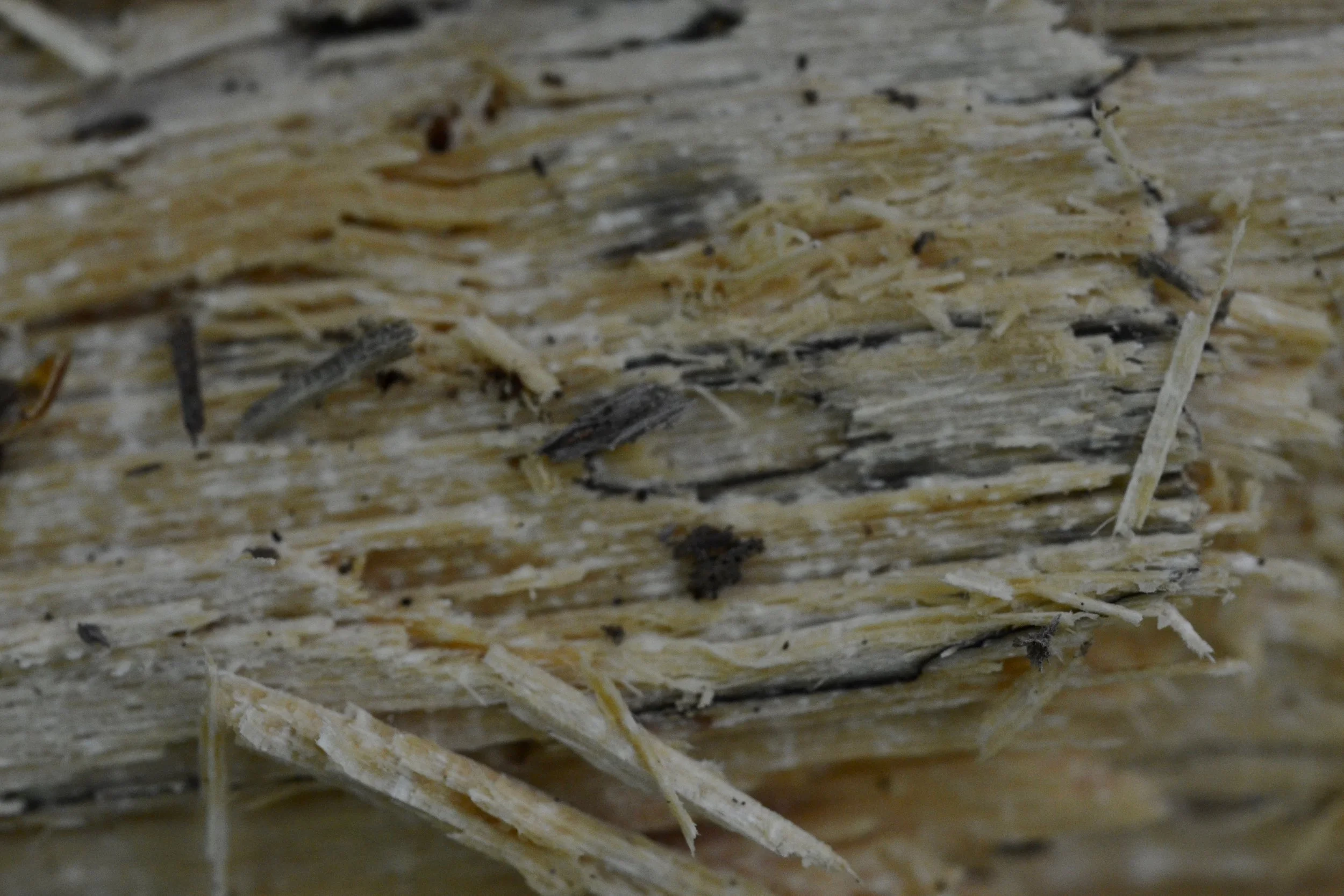Wood makes up an enormous amount of carbon, a resource all life forms require. The same properties that make wood a long lasting, pathogen resistant, structurally sound material, make it increasingly difficult to break down. Of course, our fungal friends have figured it out, but instead of metabolizing the entirety of the wood, most fungi specialize in breaking down one of the major components. To degrade the mélange of complex molecules that together constitute wood, fungi have to invest in a wide array of enzymes, and the energy return is substantially less. For this reason, there are three types of wood rot; white rot, brown rot and soft rot. Yet again, another directional selection has taken place toward resource specialization that enhances a species fitness. From the evolution of white rot to the selection of brown rot, wood saprobes have substantially shaped the forest floor throughout Earth’s history.
Fungi that utilize white rot are the more generalized, ancient lineage that metabolize both lignin and cellulose. By the simultaneous breakdown of lignin and cellulose, the oxidative processes bleach wood a white/white-yellow color, giving this type of decay its name. Lignin is a long polymer that provides wood with its rigidity. It is these polymers that can bond together in 12 different ways, which is an enzymatic nightmare for organisms to overcome. White rot fungi are the only organisms on the planet that have accomplished metabolizing irregular lignin bonds. A comparative analysis using 31 fungal genomes helped date the origin of lignin degradation. Quite interestingly, this same genomic study placed this metabolic pathway at the end of the Carboniferous period, when organic carbon burial steeply plummeted. With efficient white-rot decomposers in the terrestrial scene, carbon that would have been buried and trapped in lignin became re-assimilated into living material. White rot vastly changed the carbon cycle on Earth.
Stringy bleached wood undergoing white rot
Species in the genus Xylaria cause white rot
The steep enzymatic cost to break down lignin has driven many species to specialize in cellulose decomposition. Individuals with genetic mutations that silenced lignin breakdown have been conserved throughout the evolution of several fungal lineages. Brown rot fungi release oxalic acid that can lower the woods pH to 1.7, which aids in hydrolysis of pectin and cellulose. With cellulose and pectin degraded and absorbed into the fungus, lignin is left behind, where it turns brown through oxidization. With the cellulose extracted, the lignin filled, brown woody material cracks into cube-like structures. These brown rot fungi essentially traded resource quantity, for a lessened enzymatic expenditure. This trade off enhanced their fitness, and is why brown rot fungi are more common than their ancestral white rot predecessor.
The third type of wood decay, soft rot can be easily confused with brown rot because of the crumby cubicle woody debris that forms after degradation. Like brown rot saprobes, these fungi have lost their ability to break down lignin. Diverging from a white rotting ancestor, these fungi specialize in wood decomposition at two environmental extremes. Soft rot fungi can decompose logs sodden with water along with logs that are bone-dry. Metabolizing wood in these conditions requires an elevated concentration of nitrogen that they must access from the surrounding substrate which is why many soft rotting logs are partially buried in soil.
These different metabolic strategies are not clear cut even today. Some species are described as being an intermediate decomposer. Schizophyllum commune is a species said to be a white rot fungus. Looking closer at its genome, scientists found that regions required for lignin degradation are reduced compared to other white rot species. Schizophyllum commune is taking its first steps away from utilizing lignin. Over time this species should specialize in cellulose degradation, to maximize its energy efficiency.
Wood is a complex material that was unutilized until the end of the carboniferous period. Now, it is recycled into the organisms of the forest floor because of saprobic fungi. White rotting fungi first evolved the ability to break down wood in its entirety, but over millennia, several divergences took place. Many species improved their efficiency by specializing in cellulose, as the expensive products of lignin decomposition decrease their overall return. The next time you see a decomposing log on a hike, try and identify the type of decomposition taking place. It could be a white, brown or soft rotting species. It could even be a species of fungi at an intermediate evolutionary stage, traversing the white rotting ancestral condition to a more energy efficient brown rotting species.





